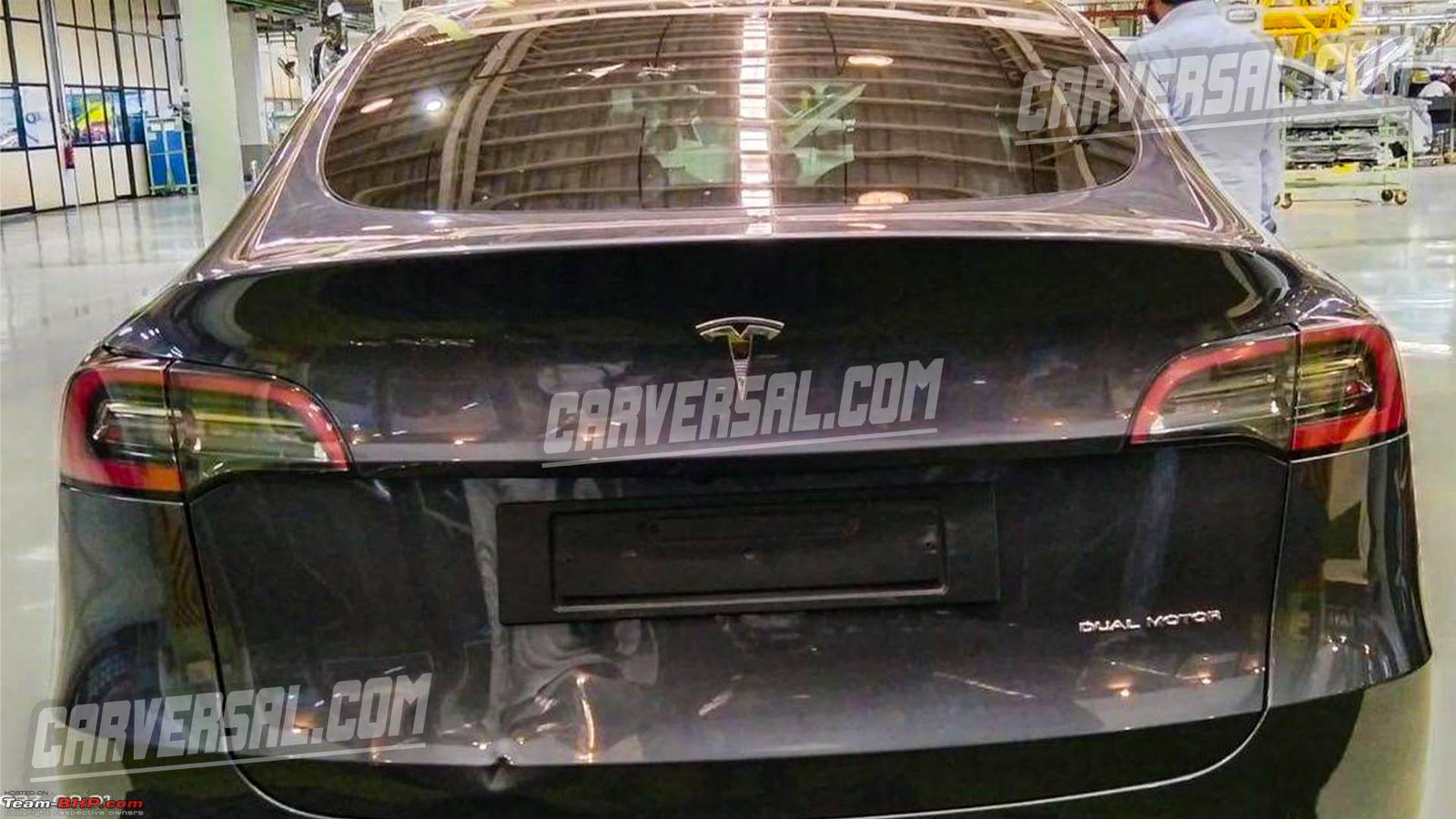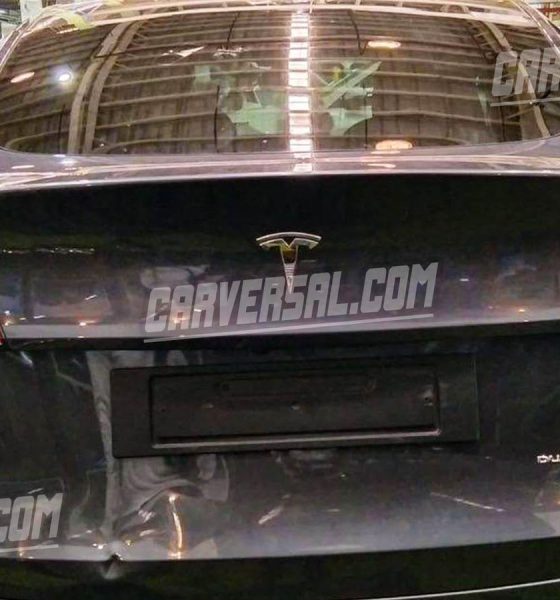

News
Tesla benchmarks cars in India, but it’s not time to get excited quite yet
Tesla is benchmarking cars in India, and while there is plenty of room for us to get excited based on recent developments about the potential for market entry, there are some reservations that should keep enthusiasm at bay.
There have been discussions between Tesla and India for years, as CEO Elon Musk and Prime Minister Narendra Modi met for the first time in 2016. Modi, who made his way to Tesla’s Fremont Factory, has had regular discussions with both Musk and other Tesla executives since then. Other government officials have also been around the talks, hoping to finally land on a deal that would bring Tesla to the country.
This year, things have intensified. Last week, Model 3 and Model Y vehicles were spotted being benchmarked in India.
A Tesla Model Y Long Range⚡ with a big dent has been spotted at ‘Mahindra’ testing facility in Pune!!@Tesla you have the opportunity to do some funny things here?.
? : Carversal pic.twitter.com/UJPiutsBtw
— Tesla Club India® (@TeslaClubIN) August 20, 2023
White Tesla Model 3 Long Range spotted again after a long time⚡️.
Charging at Tata Power Charger at IOCL, Agarkar Nagar, Pune.
? : Motoring World –https://t.co/mVUHh7YpmR pic.twitter.com/Zovqh1gXKZ
— Tesla Club India® (@TeslaClubIN) August 18, 2023
Testing has occurred previously for the automaker in India.
In mid-June 2021, Tesla had numerous Model 3 units in India for testing, according to local sources. Vehicles were there so they could obtain approval from the Automotive Research Association of India, also known as ARAI.
Ultimately, these tests fell short of establishing Tesla’s market entry, and not because they were not compliant. Tesla and India had still felt differences in terms of what was reasonable for the automaker’s requests for a reduction in import duties, which would double the price of its vehicles.
India was not interested in having Tesla test demand by importing cars from China. The country’s government has funneled billions into the Made in India campaign, which emphasizes the importance of domestic manufacturing across nearly all sectors to help support local industry and the economy.
Tesla’s ‘challenges’ with India gov’t halt potential rescue of $27B manufacturing initiative
But based on meetings earlier this year between Musk and Modi, these differences may have been pushed aside, and things are getting more serious than ever before.
Tesla is already in talks to open a factory in India that would produce a $24,000 mass-market vehicle, some reports have indicated.
Additionally, Musk has said he is “confident Tesla will be in India and that he is hopeful “we’ll be able to announce something in the not-too-distant future.”
Tesla’s next Gigafactory location unknown, but all signs point toward India
Although it seems likely Tesla will finally make its entry in India at some point in the near future, there is no indication that it is solidified as of yet.
However, even the future rivals of Tesla are already acknowledging the automaker is arriving, and they are preparing to duel with it as EV competition continues to ramp significantly.
Earlier this month, Mahindra Group CEO Anish Shah said:
“Tesla or anyone else coming in does not faze us. At one point, Mahindra was written off when all the global majors were coming into India. Today, we continue to have the number one market share in SUVs from a revenue standpoint.”
If anything is to come from the potential partnership between India and Tesla, which would see the EV maker’s vehicles finally arrive, the automaker stands to gain a new region of potential sales, which is one of the reasons Baird recommended Tesla in its “Best Ideas” list.
Tesla has established some office space in India as well, marking another indication that market entrance is potentially imminent.
Please email me with questions and comments at joey@teslarati.com. I’d love to chat! You can also reach me on Twitter @KlenderJoey, or if you have news tips, you can email us at tips@teslarati.com.

Elon Musk
Elon Musk and Tesla AI Director share insights after empty driver seat Robotaxi rides
The executives’ unoccupied tests hint at the rapid progress of Tesla’s unsupervised Robotaxi efforts.

Tesla CEO Elon Musk and AI Director Ashok Elluswamy celebrated Christmas Eve by sharing personal experiences with Robotaxi vehicles that had no safety monitor or occupant in the driver’s seat. Musk described the system’s “perfect driving” around Austin, while Elluswamy posted video from the back seat, calling it “an amazing experience.”
The executives’ unoccupied tests hint at the rapid progress of Tesla’s unsupervised Robotaxi efforts.
Elon and Ashok’s firsthand Robotaxi insights
Prior to Musk and the Tesla AI Director’s posts, sightings of unmanned Teslas navigating public roads were widely shared on social media. One such vehicle was spotted in Austin, Texas, which Elon Musk acknowleged by stating that “Testing is underway with no occupants in the car.”
Based on his Christmas Eve post, Musk seemed to have tested an unmanned Tesla himself. “A Tesla with no safety monitor in the car and me sitting in the passenger seat took me all around Austin on Sunday with perfect driving,” Musk wrote in his post.
Elluswamy responded with a 2-minute video showing himself in the rear of an unmanned Tesla. The video featured the vehicle’s empty front seats, as well as its smooth handling through real-world traffic. He captioned his video with the words, “It’s an amazing experience!”
Towards Unsupervised operations
During an xAI Hackathon earlier this month, Elon Musk mentioned that Tesla owed be removing Safety Monitors from its Robotaxis in Austin in just three weeks. “Unsupervised is pretty much solved at this point. So there will be Tesla Robotaxis operating in Austin with no one in them. Not even anyone in the passenger seat in about three weeks,” he said. Musk echoed similar estimates at the 2025 Annual Shareholder Meeting and the Q3 2025 earnings call.
Considering the insights that were posted Musk and Elluswamy, it does appear that Tesla is working hard towards operating its Robotaxis with no safety monitors. This is quite impressive considering that the service was launched just earlier this year.
Elon Musk
Starlink passes 9 million active customers just weeks after hitting 8 million
The milestone highlights the accelerating growth of Starlink, which has now been adding over 20,000 new users per day.

SpaceX’s Starlink satellite internet service has continued its rapid global expansion, surpassing 9 million active customers just weeks after crossing the 8 million mark.
The milestone highlights the accelerating growth of Starlink, which has now been adding over 20,000 new users per day.
9 million customers
In a post on X, SpaceX stated that Starlink now serves over 9 million active users across 155 countries, territories, and markets. The company reached 8 million customers in early November, meaning it added roughly 1 million subscribers in under seven weeks, or about 21,275 new users on average per day.
“Starlink is connecting more than 9M active customers with high-speed internet across 155 countries, territories, and many other markets,” Starlink wrote in a post on its official X account. SpaceX President Gwynne Shotwell also celebrated the milestone on X. “A huge thank you to all of our customers and congrats to the Starlink team for such an incredible product,” she wrote.
That growth rate reflects both rising demand for broadband in underserved regions and Starlink’s expanding satellite constellation, which now includes more than 9,000 low-Earth-orbit satellites designed to deliver high-speed, low-latency internet worldwide.
Starlink’s momentum
Starlink’s momentum has been building up. SpaceX reported 4.6 million Starlink customers in December 2024, followed by 7 million by August 2025, and 8 million customers in November. Independent data also suggests Starlink usage is rising sharply, with Cloudflare reporting that global web traffic from Starlink users more than doubled in 2025, as noted in an Insider report.
Starlink’s momentum is increasingly tied to SpaceX’s broader financial outlook. Elon Musk has said the satellite network is “by far” the company’s largest revenue driver, and reports suggest SpaceX may be positioning itself for an initial public offering as soon as next year, with valuations estimated as high as $1.5 trillion. Musk has also suggested in the past that Starlink could have its own IPO in the future.
News
NVIDIA Director of Robotics: Tesla FSD v14 is the first AI to pass the “Physical Turing Test”
After testing FSD v14, Fan stated that his experience with FSD felt magical at first, but it soon started to feel like a routine.

NVIDIA Director of Robotics Jim Fan has praised Tesla’s Full Self-Driving (Supervised) v14 as the first AI to pass what he described as a “Physical Turing Test.”
After testing FSD v14, Fan stated that his experience with FSD felt magical at first, but it soon started to feel like a routine. And just like smartphones today, removing it now would “actively hurt.”
Jim Fan’s hands-on FSD v14 impressions
Fan, a leading researcher in embodied AI who is currently solving Physical AI at NVIDIA and spearheading the company’s Project GR00T initiative, noted that he actually was late to the Tesla game. He was, however, one of the first to try out FSD v14.
“I was very late to own a Tesla but among the earliest to try out FSD v14. It’s perhaps the first time I experience an AI that passes the Physical Turing Test: after a long day at work, you press a button, lay back, and couldn’t tell if a neural net or a human drove you home,” Fan wrote in a post on X.
Fan added: “Despite knowing exactly how robot learning works, I still find it magical watching the steering wheel turn by itself. First it feels surreal, next it becomes routine. Then, like the smartphone, taking it away actively hurts. This is how humanity gets rewired and glued to god-like technologies.”
The Physical Turing Test
The original Turing Test was conceived by Alan Turing in 1950, and it was aimed at determining if a machine could exhibit behavior that is equivalent to or indistinguishable from a human. By focusing on text-based conversations, the original Turing Test set a high bar for natural language processing and machine learning.
This test has been passed by today’s large language models. However, the capability to converse in a humanlike manner is a completely different challenge from performing real-world problem-solving or physical interactions. Thus, Fan introduced the Physical Turing Test, which challenges AI systems to demonstrate intelligence through physical actions.
Based on Fan’s comments, Tesla has demonstrated these intelligent physical actions with FSD v14. Elon Musk agreed with the NVIDIA executive, stating in a post on X that with FSD v14, “you can sense the sentience maturing.” Musk also praised Tesla AI, calling it the best “real-world AI” today.








